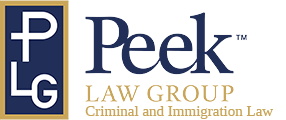Doctors and other health workers are important members of society. However, a shortage in key areas has made foreign doctors and nurses increasingly vital meaning more health care providers are applying for medical worker visas.
We are seeing an expansion of health care services here in Austin. Baylor Scott & White Health, the nation’s largest nonprofit health care system, is to open two clinics in the heart of the downtown.
The major investment was detailed in Austin Business Journal. Previously, the health provider was confined to the suburbs of the city.

The health care sector is expanding rapidly. The growing demands of the baby boomer generation combined with staff shortages in some sectors has led more hospitals and clinics to seek physicians and nurses overseas.
According to Forbes more than a quarter of the doctors and surgeons who are working in the United States are from other countries along with about a fifth of all nurses and a sixth of dentists.
According to the latest predictions, the United States will face a shortage of 46,000 to 90,400 doctors by 2025. Primary care took the biggest hit, a trend likely linked to pay levels lagging behind those of other areas. From 2000 to 2004, the median income rose by just 10 percent in the primary care field compared to 16 percent for non-primary specialties.
Given the level of demand, a properly functioning system of medical worker visas is necessary.
What Medical Worker Visas Should You Apply For?
Visas for Doctors
At Peek Law Group , we help medical providers apply for visas for doctors. Notwithstanding the shortages of health care professionals in some areas, it can be tough to obtain a visa.
Most doctors enter the United States on either J-1 or H-1B visas. The H-1B is often preferred by the physicians. However, the J-1 may be the only option offered by some health care providers because there are fewer liabilities and responsibilities on the employer.
The J-1, or exchange visitor visa, is sponsored by the Educational Commission for Foreign Medical Graduates (ECFMG).
ECFMG places inflexible limits on the length of the visa, change in programs, and other areas like working additional jobs.
ECFMG is authorized by the U.S. Department of State to sponsor J-1 Exchange Visitor doctors who are enrolled in training or accredited programs of graduate medical education as well as advanced research programs. You can find out more about J-1 visas here.
Visas for Nurses
The H-1C nonimmigrant category was created in 1999 during an acute shortage of nurses. Demand for the visas has fluctuated in recent years. Currently, only 500 H-1C visas are granted annually. There are numerical limits for each state based on the state’s population.
States like Texas with more than nine million people have a cap of 50 a year.
Given the small numbers of visas given, only the most qualified nurses from other countries will be accepted. You can read about the requirements here on our website.
The caps on visa numbers are restrictive given the projected size of the demand for health professionals in hospitals and other medical facilities.
More doctors from Spanish speaking countries would also help address the serious shortage of doctors who speak a second language. While almost 40 million people in the United States spoke Spanish as of 2011, making it the second-most prevalent language after English, Forbes reported less than 4 percent of health providers are proficient in the language. The shortage is even more acute in relation to other languages.
At Peek Law Group our seasoned immigration attorneys help medical professionals who are seeking employment in the United States apply for visas. Given the shortage of visas, it’s vital to get your application right. You can read more about the process here. Contact us at (512) 399-2311 for a consultation

